On the bank of a swelling South Nahanni River, this N.W.T. community is preparing for the worst

Nahɂą Dehé Dene Band Chief Steve Vital's message for his community, on the bank of a swelling South Nahanni River, has been to hope for the best — but prepare for the worst.
And people living in Nahanni Butte, N.W.T. have been taking that message to heart.
The community of 93 people, which lies next to the point where the South Nahanni River joins the Liard River, was put on high alert for flooding this week. The N.W.T. government also warned the same in Fort Liard, citing snowmelt from the mountains in B.C., Yukon, and the N.W.T.
The South Nahanni River rose between two to three inches overnight, and on Saturday morning Soham Srimani, the community's band manager, said that was good sign — compared to larger increases in recent nights. A water monitoring bulletin issued Friday evening said the flow on the Liard River had increased steadily over the past couple of days.
"We've been through this before, so it's pretty familiar," said Jayne Konisenta, a band councillor, a fuel service contractor and a life-time Nahanni Butte resident. She started preparing for a possible flood when she returned to the community from a trip to Yellowknife on Wednesday.

"I'm lucky I live in a two-storey home, so I moved everything upstairs."
Konisenta also cleaned up her yard, and said she's keeping a close eye on the fuel tank farm that she manages. If the community is ordered to evacuate, she said she'll give people an opportunity to stock up on diesel and gas before locking up the valves and stopping service.
"I think we need to relocate to higher grounds. Because if this is going to continue, it's frustrating for the community to do this every year," she said, noting that residents braced for flooding last year too.
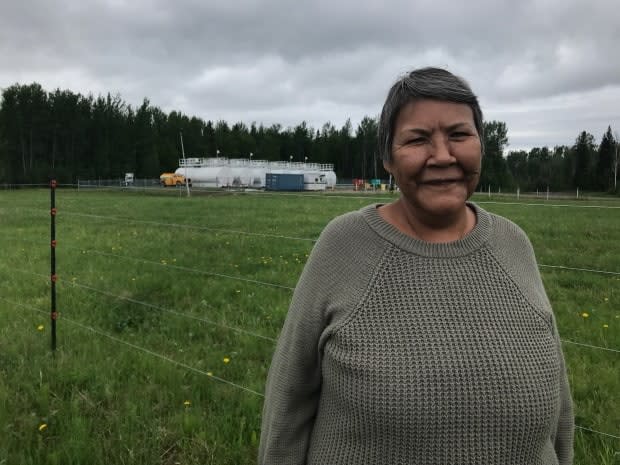
Evacuation plans
Standing at the edge of the water at the Liard River Crossing, Jonathan Konisenta, Jayne's son, said he's pretty sure the water will go up a lot higher than it has already.
"There's still a lot of snow in the mountains. In the forecast it's supposed to rain, I don't know for how many days. That'll be pretty interesting to see," he said.
The Liard River Crossing is a critical point in the community. Aside from taking a plane, the only other way out of town is to make the 10-minute drive to the crossing and cross by boat, where another road connects with Highway 7.
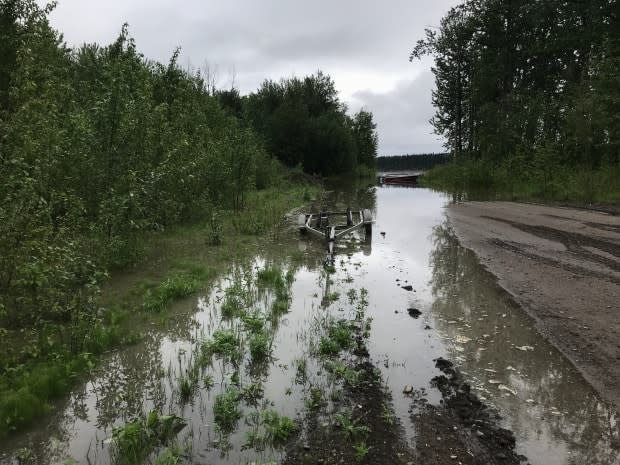
On the Nahanni Butte side of the Liard River, the road to the crossing is flooded — but it's still possible for boats to enter the water. Chief Vital said an evacuation would be triggered if water covers the access road in between the community and the crossing, jeopardizing the possibility of leaving by boat.
Vital said the N.W.T.'s Department of Municipal and Community Affairs will fly elders and those without transportation on the other side of the Liard River to Fort Simpson, if an evacuation is ordered.
He said the band would also help ferry people across the Liard River to their vehicles, if needed, and that people are well-aware of the evacuation plan — unlike a little more than a decade ago.
'Can't predict climate change'
Nahanni Butte was ordered to evacuate because of a flood in 2012.
Jayne said the order was sudden and unexpected, and residents were kept out of the community for about three weeks. Water damaged the band office and the gym, flooded the power plant, and left a two-inch layer of silt in most buildings that required extensive cleaning.
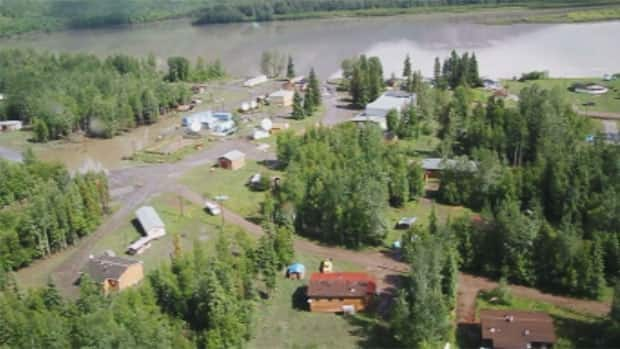
Jonathan was among those who stayed behind when the evacuation order was issued.
"I was here for about 10 days or so, just kind of over watched the community and watched the dogs and stuff. Just tried to watch the house mainly," said Jonathan.
Jonathan said the water in 2012 peaked about a foot away from the foundation of his family's home, but they lost tools, snowmobiles, and a vehicle that had been sitting in the yard. This time, he noted, he's getting a head-start on preparations.
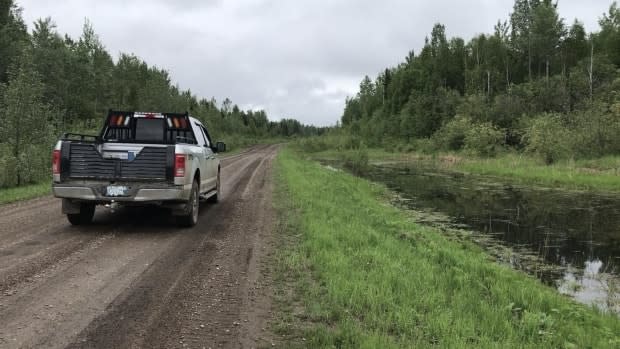
"I was looking at the forecast, I was looking at the flood warning, so that got my attention," he explained.
There is a low-lying point in Nahanni Butte, across the road from the teachers cabin. A stake in the water, with bands of orange tape wrapped around it, shows how the water on the South Nahanni River continues to rise.
The Nahɂą Dehé Dene Band is keeping a close eye on the water there.
On a power pole across from the power plant, similar bands of tape mark the point at which the Northwest Territories Power Corporation would turn off the water — one foot below the facility's floor.
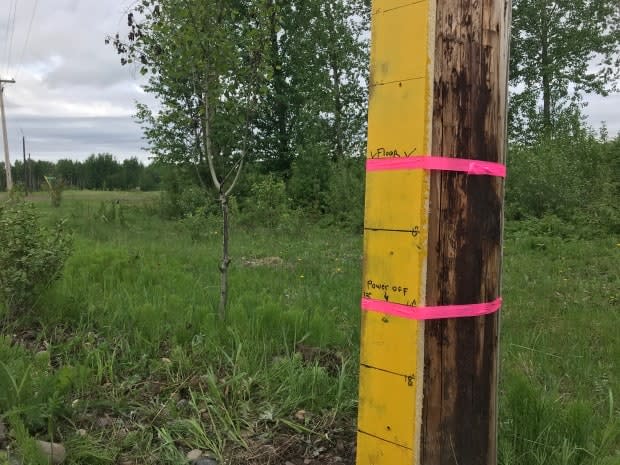
"I'm telling everybody here that a flood is possibly going to happen, but we're hoping it doesn't," said Vital, attributing the situation — the same way Jayne did — to climate change.
"Can't predict climate change," he said.


